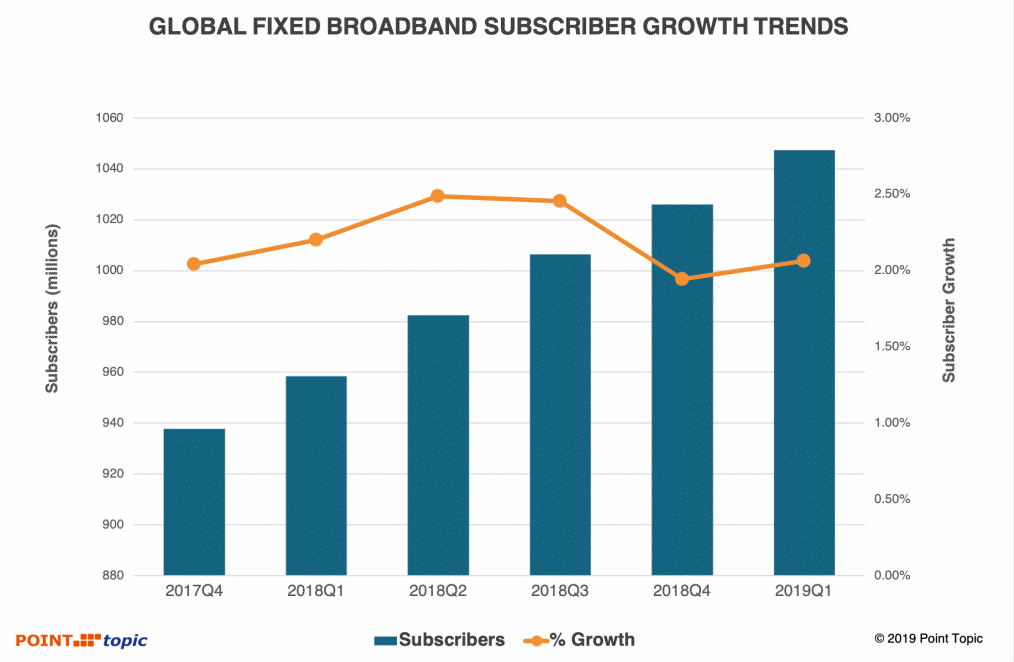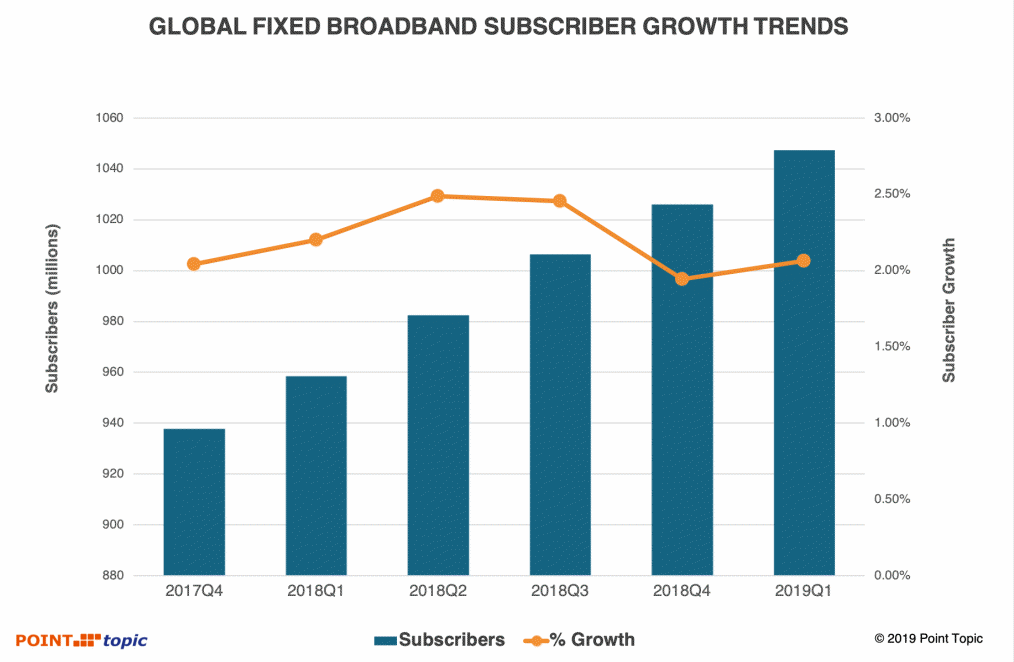At the end of the first quarter of this year, the number of global fixed broadband connections reached 1.047 billion according to a new report from Point Topic.

Last year the company reported the one billionth fixed broadband subscription was signed up in the second half of the year. In its latest report, Point Topic says there were 21,174,433 net additions in Q1 and growth between Q4 2018 and Q1 2019 was 2.06%.
The biggest growth in terms of technology type between Q1 2018 and Q1 2019 was seen in Fibre To The Home (FTTH) - up 22%. Other "FTT" type connections such as Fibre To The Curb (FTTC) collectively saw growth of 2.4%. A casualty during the period of course were copper connections, which dropped 8.9% in that period.
With regard to wireless, including Fixed Wireless Access (FWA), that saw impressive growth of 17.9%.
"Wireless (mostly FWA) and satellite saw healthy growth as these technologies are increasingly used to cover broadband ‘white spots’," says Point Topic.
A 'white spot' is an area where there is no broadband infrastructure, and unlikely to be any developed in the near future. However, fixed wireless internet is also gaining popularity in areas where there is existing broadband infrastructure; such as in some parts of Melbourne, Australia where Lightning Broadband is currently most active.
Back to the report - over 65 per cent of all net additions in fixed broadband subscribers in the first quarter came from East Asia (which includes countries such as China, Hong Kong, Japan, North Korea, South Korea and Taiwan), which also held onto the largest regional market share of all subscribers at 47 per cent.
The report notes the top ten countries by total fixed broadband subscribers hasn't changed in nearly 3 years. The top 10 remain:
- China
- USA
- Japan
- Germany
- Russian Federation
- France
- Brazil
- UK
- Republic of Korea
- India
The difference between the top two is huge - China has around 400 million fixed broadband subscribers, while the USA has around 120 - 130 million judging by the graph.
The information used in Point Topic's report is taken from the company's Global Broadband Statistics service.



